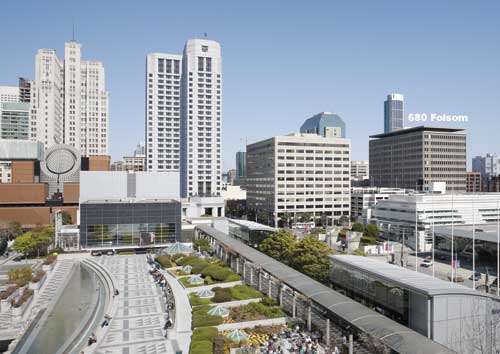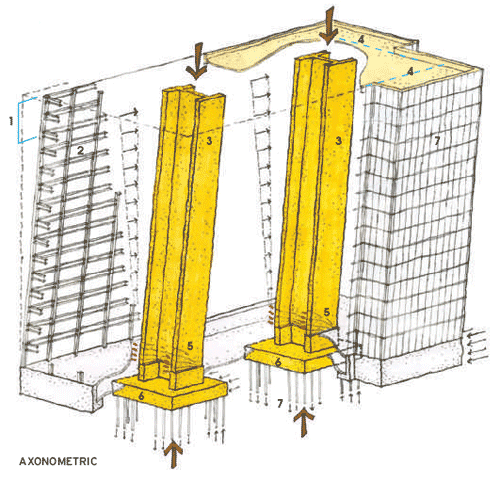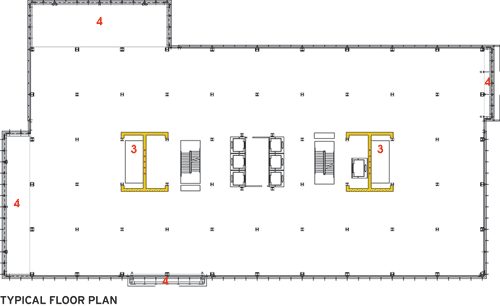Three Buildings, Three Different Approaches
The new configuration should also provide TMG with an extra edge as it tries to lease the tower before moving forward with construction. The horizontal additions should make the building more attractive to corporate tenants since the protrusions provide the possibility of additional corner offices on each level, explains Chow.
 |
The vacant 680 Folsom (above, far right) occupies a prime South of Market site near Yerba Buena Gardens (foreground) and the San Francisco Museum of Modern Art (above, far left). Photo courtesy SOM |
Early in the design process, the team considered a retrofit scheme that included a perimeter bracing system, but they worried that such a strategy would add to the building's visual bulk. Instead, they opted for constructing I-shaped, posttensioned concrete spines at each end of the tower's core. The addition of these spines, or "flexural walls," will provide strength and stiffness, and displacement will be reduced, explains David Mar, principal of Tipping Mar.
| 1. Two-story vertical addition 2. Existing steel moment frame 3. Posttensioned concrete spine 4.Horizontal addition |
5. Self-healing flexural hinge 6. Spine foundation 7. High-performance curtain wall |
 |
|
| Image courtesy Tipping Mar | |
 |
Horizontal extensions to each floor plate will help reduce the building's visual bulk and provide the possibility for additional corner offices. Image courtesy Tipping Mar |
The spines will be "self-healing," according to Mar. The posttensioning tendons inside the concrete will allow them to flex at the base and realign without sustaining damage. Mar and his team have set the strength and stiffness of these spines to protect nonstructural components, such as the glass facade. "We worked with the manufacturer to make sure maximum drifts would not damage the skin," he says.
This strategy will help the renovated building exceed the requirements of the seismic code, which emphasizes preventing loss of life rather than minimizing property damage. Even after a powerful earthquake, 680 Folsom should be both operational and safe to occupy.
This resiliency, along with features such as a green roof, its high-performance skin, and energy-conserving mechanical systems, is part of the project's bid for LEED Gold certification. Even though the rating system has no credits that pertain to seismic design, the team has applied for innovation points based on the renovated building's durability. "We are getting 680 Folsom ready for the next 100 years," says Mar.









